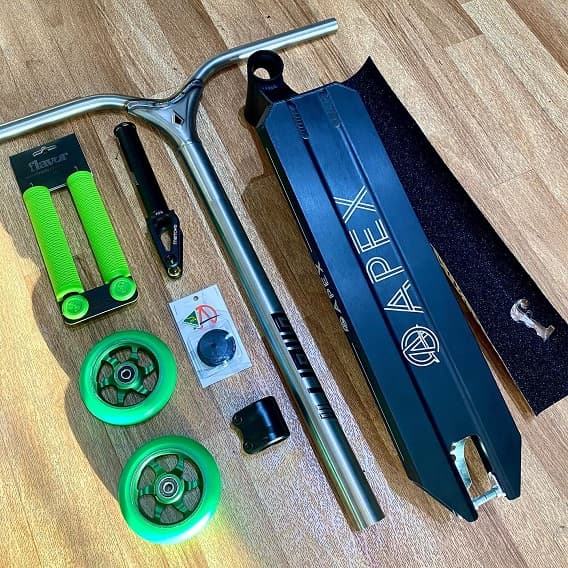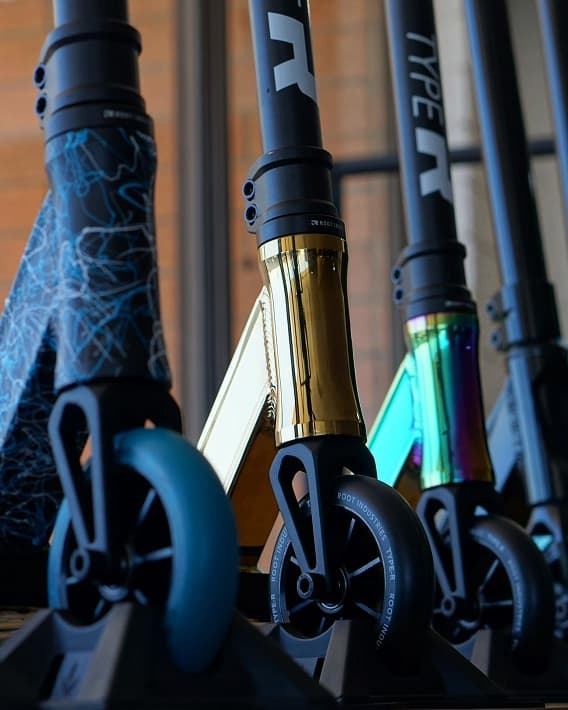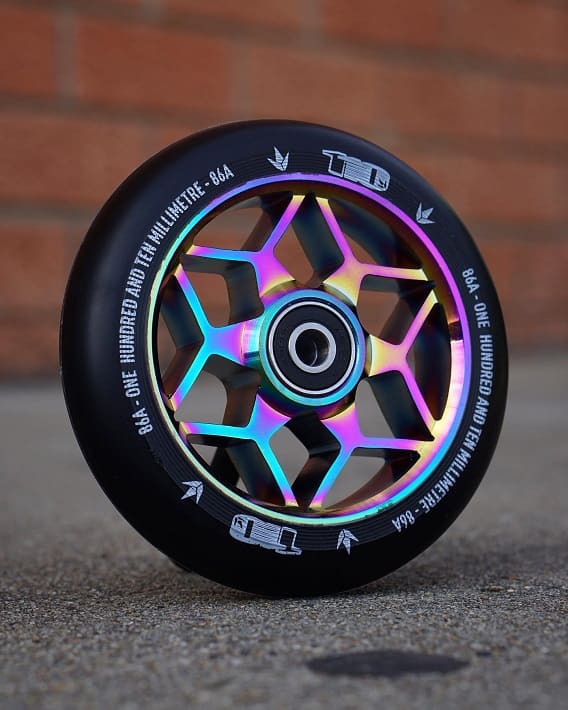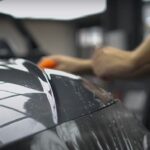Scooters are one of the best pastime activities for adults and kids, offering endless amounts of fun and excitement in the neighbourhood or park. But with scooters becoming increasingly more popular, the number of different models and makes you’ll come across is also increasing, which is why you need to get an idea of what you should look for when shopping, in order to make sure you get the most suitable scooter for you or your kid. The best way to find what you need is to understand the parts that make it up.
Scooter Decks

The deck is the most important part of the scooter as it’s the part the entire scooter is built around. To make sure it is lightweight, yet strong enough to withstand the abuse of pro scooter stunts, high-end decks from industry-leading brands like Apex Scooters, Fuzion, Phoenix, etc. manufacture their decks from high-grade aluminium. Standard scooter decks come with a head tube and a single piece body. Most of them also come with a pre-installed headset, also known as an integrated headset, while those that come without one are referred to as non-integrated.
Scooter Bars
Scooter bars are available in a wide range of types, styles and dimensions. They can be made from either aluminium or steel. The latter are more popular on the market today. And even though the diameter of most bars is oversized at 1 and 3/8 inches, the industry-standard diameter is 1 and 1/4 inches. The size of the scooter bars you choose will affect your choice of forks and clamps. The different styles are there just for aesthetic purposes, and they won’t alter the performance of the scooter.

Scooter Forks
The fork is considered one of the most critical parts. It goes through the headset, connecting the deck, bars and front wheel. Scooter forks are available in a range of styles, strengths and weights. The fork and bars are connected with a compression system. There are threadless forks that are used on high-end scooters, which are stronger and facilitate better performance. The type of fork you choose has a bearing on the most suitable wheels. For instance, choosing a Lucky Indy Fork will give you a different feeling than getting an Envy Declare Fork or an Apex Scooters Fork.
Scooter Headset
The headset of the scooter will determine the overall feeling of your scooter ride and how you perform stunts. This part enables the fork tube to rotate within the head tube, which is essential for steering. To facilitate functionality, headsets are made up of a few different components, including bearings, fork race, bearing cups and top caps. The smooth operation that high-end scooters provide is a result of the sealed headset coupled with a threadless fork and a compression system. It’s recommended you go with an integrated headset that has pre-installed bearing cups into the head tube since messing around with this assembly can be very challenging.
Scooter Clamp
Scooter clamps hold the bars to ensure they work together and rotate in unison. Nowadays, you’ll find double, triple and quadruple clamps. The name of these clamps derives from the number of bolts they feature, which are used to hold the bars securely to the fork tube. You’ll also find clamps from various manufacturers, which have their own unique designs suitable for different performance levels. For the best performance, you’ll want reliable and high-performance clamps.
Scooter Wheels

The scooter wheels play a big role in how your scooter looks and feels. They have two components – urethane and a core. There are many different core designs and urethane compounds used by different manufacturers that vary greatly from one another, resulting in a different feel and look. Even though some wheels can have a plastic core, only those that have a metallic core can withstand the rigours of pro scooter maneuvering, stunts and tricks. The size of the wheels should match the fork, and they typically range from 100mm to 125mm. The larger the wheels, the faster the scooter will be. Softer wheels provide better traction, while harder wheels are better suited for fast riding.
Scooter Compression
The compression system is responsible for establishing a stable connection between the fork, deck and bars, and it’s a component that’s crucial in the assembly of a solidly-built scooter. Poor compression can cause damage to some parts of the scooter, and even worse – lead to injury. Scooters that are on the lower side of the price range feature standard compression systems. Medium priced scooters feature an inverted compression system. The hidden internal compression system is the most durable and stable. It is commonly used by professional riders and it can be found on high-performance scooters.



